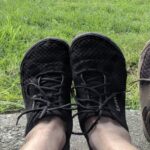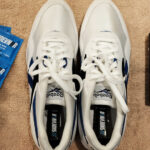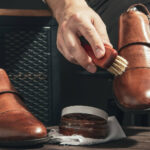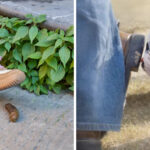Heel slippage can be a frustrating and persistent problem. It typically occurs when the heel of your shoe slips out from under you, causing discomfort or pain. The good news is that there are many things we can do to prevent this from happening! Read on for tips on how to prevent heel slippage in shoes and boots!

What is Heel Slippage?
Heel Slippage is the result of your heel moving out from under you. When this happens, there is often an uncomfortable sensation in the back of the ankle or a feeling that your shoe has come off entirely.
The cause can be traced to many things including:
- An inadequate fit – loose shoes may not stay on properly and tight shoes might put too much pressure on the back of your heel causing it to move out from under you.
- Unsuitable or improper footwear – for example, high heels are not well suited for running and other athletic activities while flat shoes may cause any amount of slippage due to their lack of traction.
21 Tips on How to Prevent Heel Slippage in Shoes and Boots
1. Wear Shoes With a Heel That Is the Same Height as Your Arch:
It is very important to match the height of your heel to the arch on your foot. If a shoe is too high, it can put undue stress on your toes and may cause blisters. Too low and you risk slippage due to inadequate support.
2. Wear Shoes That Fit Well
Make sure there is enough space in the toe box of your shoe. If there is too much space, it can cause blisters and discomfort.
3. Wear Shoes With a Tread
The best type of shoe to wear while going for a walk or hiking would be one that has good traction on its sole so you don’t slip due to lack of grip (think rubber).
4. Adjust Shoelaces Accordingly
Loose laces are never ideal when walking around because they can easily come undone and create an imbalance in weight distribution which may lead to slippage
5. Apply a Non-slip Pad
Apply a non-slip pad to the bottom of your heel for more traction on slippery surfaces.
6. Use a Heel Cup
Use a shoe insert, such as an orthotic or heel cups for added cushioning.
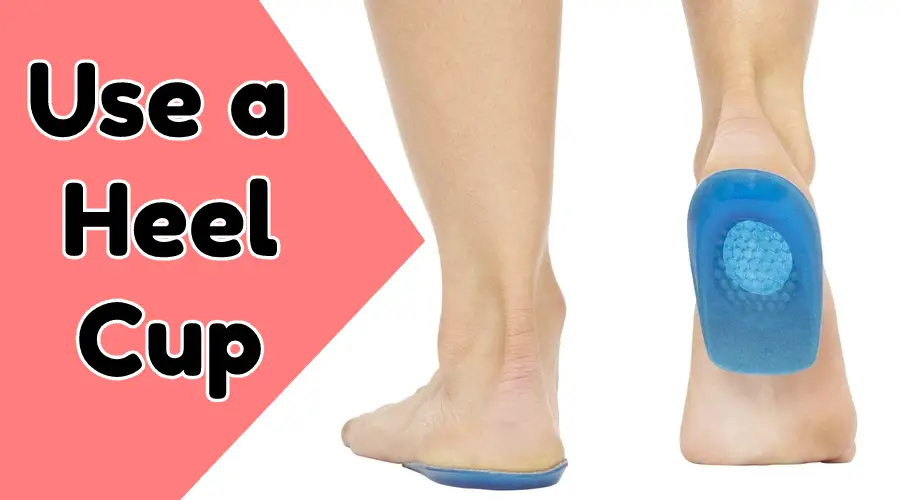
7. Wear Heels With Inserts at the Back of Your Feet
Inserts can distribute weight more evenly across the foot and prevent slippage.
8. Use Double-Sided Tape
If you can use double-sided tape properly, it can also keep your heels from slipping.
9. Soles That Are Not Slippery
Shoes and boots with rubber soles or grooves will be less likely to slip because of the increased grip on the surface.
10. Purchase a Pair of Shoes With Thicker Soles
If you need more stability, then purchase a shoe that has a thick sole that may provide better traction due to its thickness.
11. By Heating the Shoes Using Boot Dryer
By heating the shoe, you can stretch it which can make the shoe tighter.
12. By Using An Orthotic
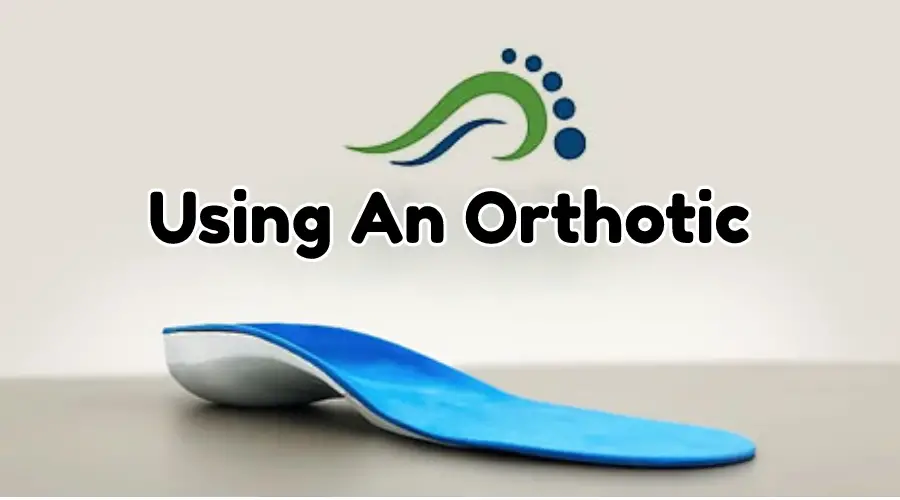
By using an orthotic, it can provide a barrier to keep your foot from sliding forward in the heel area. Try adding cushioning for more comfort. A number of people have found that nonslip pads or gel pads help too and are worth trying out if you experience frequent slippage while wearing heels!
13. Heel Cups
Heel cups should be made from silicon rubber because they will not stretch out over time like other materials do so they won’t need much replacement.
14. Soles With Treads on Them
Shoes with soles that feature treads may also be helpful as these tend to grip surfaces better than shoes without any type of traction, such as leather.
15. Always Wear Socks (Not Just to Keep Your Toes Warm)
Wearing socks will help reduce friction between skin and shoes which could cause discomfort from chafing, blisters and even calluses. If it’s too cold outside you might want to consider wearing tights under your pants instead of going sockless if they offer better protection against wind-chill than what is offered by thin cotton materials like jeans.
16. Apply Lotion Before Putting on New Shoes
Apply lotion to your heels and underside of the balls of your feet before slipping on new shoes. It will help reduce friction against tight-fitting footwear, which could be painful after a while if you don’t do this step.
17. Wear Sandals or Flip Flops
If at all possible, always opt for thin rubber soles that have traction on slippery surfaces rather than thick leather ones like boots that can easily cause slippage from lack of grip when walking around during winter months.
18. Try Removing Heel Caps
Heel caps are great in preventing fabric snagging but they also create less contact between the shoe as well as the surface it is being stepped onto. Try taking them off!
19. Wear Taller Shoes With More Arch Support
A lot of times, the problem with slippage is that the shoe doesn’t have enough arch support. It’s a good idea to wear shoes with more height and for your feet to be well-supported in them all around so they don’t slip out when you’re walking or standing up straight.
20. Put New Soles Under Old Boots
You should do this every few years as wearing down the sole will eventually let dirt seep into the boot resulting in bad odors over time. A worn sole also increases your chances of slipping because it has less traction.
21. Keep Your Shoes Dry
Keep your shoes dry to prevent them from developing bad odors and slipping off easily.
Why Does Heel Slippage Happen?
Heel slippage can be caused by a number of different factors. It’s important to identify the root cause in order to prevent this problem from happening again.
1. Heels Are Too High
The higher the heel, the more likely it is to slip off. High heels should only be worn for short periods of time and on even surfaces.
2. Shoes Don’t Fit
The higher the heel, the more likely it is to slip off. High heels should only be worn for short periods of time and on even surfaces.
3. The Surface Is Slippery
A sudden change in terrain can cause a shoe with a low-grip sole to easily slide off when walking across certain surfaces such as ice or snow.
4. The Heel Is Not the Right Width for Your Foot
A shoe that’s too wide at the heel will most likely slip off because it doesn’t hold your foot securely in place.
5. The Shoes Are Made of Slippery Material
Shoes or boots with a smooth leather surface, for example, can be difficult to keep on if they’re not laced tightly enough.
6. Heels Have Become Worn Down
If you use your heels often and they’ve begun to wear down then this might be an issue as well. The sole may no longer provide adequate grip which could cause them to slide when used outdoors or on certain surfaces such as ice.
7. You Don’t Know How Tight to Tie Your Shoelaces
A loose lace won’t stay tied and secure as a tighter one.
8. Insoles Need Replacing
Shoes will wear down over time, which may result in lost padding that provides stability and support throughout your feet’ journey. Make sure to replace insoles every few months so you always have the perfect amount of support.
What Should You Do if Heel Slippage Occurs
You should do the following if you experience heel slippage:
Take Off the Shoes and Examine Them for Any Signs of Damage to the Heel
It is very important to find out the reason for the heel slippage. Sometimes, a small amount of dirt or dust can work its way inside and get stuck in-between the soles which are causing your shoes to slip off when you walk. This usually happens over time with constant use as we wear down our shoe’s sole and it reduces grip gradually.
It may also be possible that there are bumps on the surface of the floor where you’re walking such as a carpeted staircase which could lead to this issue too. If so, then make sure you take extra care when going upstairs!
Check if There Are Any Sharp Objects in Your Shoe That May Have Caused It to Slip
A sharp object is a very dangerous thing to have inside your shoe. You can check for it by using a flashlight, or if you’re feeling brave enough, use the lit end of a matchstick and slowly look around with it in-between the soles. If you see any sharp object that may be causing heel slippage then try to remove them quickly before they do more damage than just slip-on shoes and boots!
Try Using a Shoe Stretcher or Heel Grip Pad to See If This Helps With The Slippage
A shoe stretcher can help fix a shoe that has been misshapen to the point where it’s difficult to walk, and heel grip pads can help catch loose items (like dirt) inside of your shoes without sliding around.
Consider Buying Different Shoes
If you think your shoe is responsible for the heel slippage, then you’re in luck! There are many brands and styles out there that can help with your specific needs.
Conclusion
It is possible to prevent heel slippage in shoes and boots with these methods. With the right combination of them, you should be able to find what works for you! There are many different brands out there that also have styles specifically designed for people who experience this issue, so it’s worth looking into before settling on a solution.
You may read also – Best Slippers for Cracked Heels


